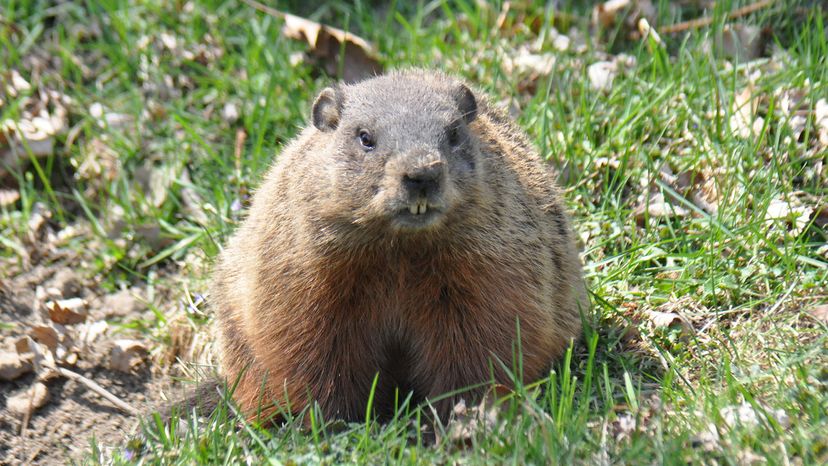
To chuck or not to chuck, that is the question. Since a woodchuck can't actually chuck wood — but would if it could — what would it chuck if it could? Or would it? Yes, it could, and it wood. No, sorry, it would ... and it does. The large, squirrel-like rodents toss out, or chuck, the one thing that stands between them and a life of underground luxury — dirt. We're talking up to 700 pounds (318 kilograms) of the stuff to create a single burrow.
Using their stocky build, four chisel-shaped, front teeth and sturdy claws, they chuck out hefty loads of dirt to burrow underground and form an elaborate system of safety and tranquility. The burrows, which can be up to 66 feet (20 meters) long and 6 feet (2 meters) deep, serve as homes, spaces to hide from predators, spots to hibernate and to give birth. Their burrows might just be the mansions of the underground world, consisting of various levels, numerous exits and even a designated bathroom area. Talk about a sanitary rodent.
Advertisement
As if their name isn't confusing enough, 'woodchuck' is only one of many aliases they're known to use. The most common name is the groundhog (think Punxsutawney Phil searching for his shadow). But the list also includes whistling pig, land squirrel, land beaver, marmot and even 'underground architect.' Which name you choose to use likely depends on where you're from, but the origins of the name woodchuck come from the Native American word, wuchak, which translates to "digger."
From a distance, it can be easy to confuse the woodchuck with an animal who does actually love wood — the beaver. But the woodchuck looks more like what would happen if a beaver and a squirrel got together and had kids — the coarse brown fur, muscular strength and front incisors of a beaver with the long bushy tail and nimble movements of a squirrel.
Wood's not totally off their radar though. They'll take an occasional climb up a tree to nab some fresh fruit to balance out their diet of veggies and grasses, and they tend to burrow in open meadows and fields that border woodland areas. Or if you happen to be unlucky, in your yard. Known all too well to homeowners and farmers, they can be quite the pest when they take up residence.
Unfortunately, all that dirt they chuck won't make the tongue twister any easier to say. But here's to them not chucking it all in your backyard and instead just popping up in a distant meadow for a break from their classy basement life.
Advertisement

